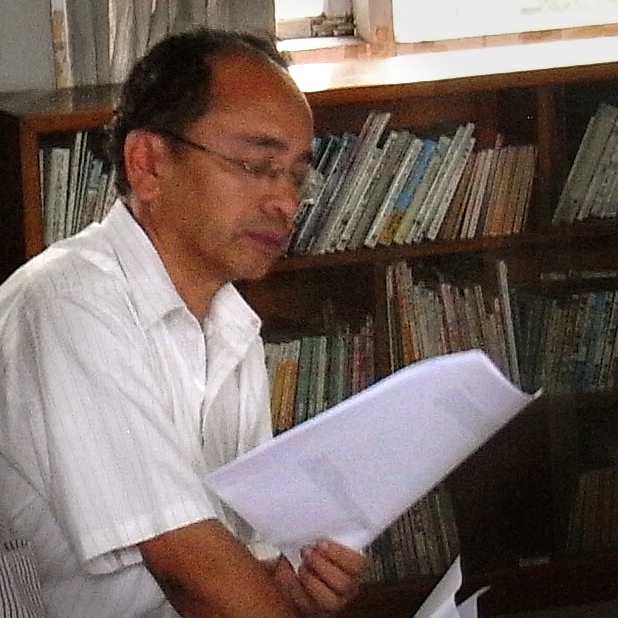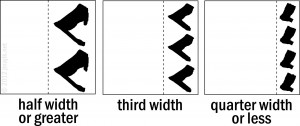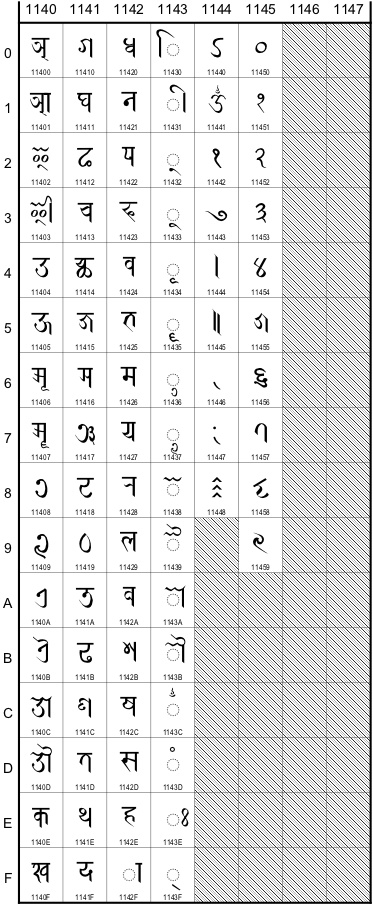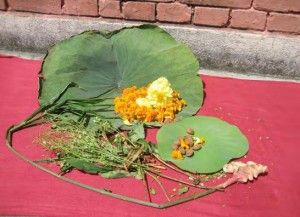
हिरण्यवर्णमहाविहार (क्वा बाहा) अवस्थित, यल
जन्म मिति— ने. सं. १०७१ (वि. सं. माघ ४, २००७)
दिवंगत मिति— ने. सं. ११३२ (वि. सं. आश्विन २, २०६९)
Refer to: Anshuman Pandey, ‘N4184 Proposal to Encode the Newar Script in ISO/IEC 10646’, February 29, 2012 [PDF]. Previous discussion: here.
The name ‘Newar’ is preferable simply because most other options can be ruled out. ‘Nepalese’ is untenable, because it falsely implies a one-to-one relationship with the present-day nation-state, even though it is accurate within a certain (historically earlier) context. ‘Newari’ is a (now deprecated) name for the language – not the script, nor anything else; ‘Nevārī’ is quite meaningless, except to some Indologists.
The proposal, as I understand it, indeed deals with the Pracalita script, but has enough hooks to allow unification with proposals for other Newar scripts, such as Bhujiṅmola – hence ‘Newar’. (NB: It is not yet clear whether unification with Rañjanā – which is, strictly speaking, Indo-Nepalese, and which has a user base that includes many non-Newars, such as Tibetans – is feasible. In any case, much of the present and previous discussion about the Pracalita script is also applicable to Rañjanā.)
11442 NEWAR FINAL ANUSVARA: Although this mark originates with the m-virāma mark used by East Indian scribes, in Nepal it has multivalent significance and in many contexts has nothing to do with nasalization (often being interchangeable with 1144B NEWAR GAP FILLER). Recommendation: Minimise phonetic/semantic description in favour of graphic description – maybe NEWAR SEMICOLON for want of a better term. Classify under Punctuation or Various Signs.
11443 NEWAR SIDDHI = शुभचिं (Shrestha NS 1132:21). There is no uniform name for this mark in Newar (esp. not the neologism bhiṃciṃ), nor is siddhi/añji recommended (not just because this designation is unknown in Nepal, but because usage may also vary; confusion with NEWAR OM is common). Recommendation: NEWAR AUSPICIOUSNESS MARK or similar.
11448 NEWAR COMMA = अर्धविराम (Shrestha NS 1132:24).
11449 NEWAR DOUBLE COMMA: I now think this mark can be represented with two adjacent NEWAR COMMAs. Its usual behaviour of stacking diagonally (see Fig.3) rather than horizontally should however be specified. Recommendation: Remove from the repertoire.
1144B NEWAR HIGH SPACING DOT = अल्पविराम (ibid.).
1144C NEWAR ABBREVIATION SIGN CIRCLE = संक्षेपीकरण यानाः च्वयातःगु थासय् थुगु चिं (ibid.).
1145A NEWAR FLOWER = स्वांथें ज्याःगु चिं (ibid.).
1145C NEWAR PLACEHOLDER MARK is the line-width equivalent of the NEWAR GAP FILLER (see below). Recommendation: Change name to NEWAR LINE FILLER MARK.
Following comments on earlier drafts of N4184, especially those of Kashinath Tamot, it should be clarified that the primary function of 1144B NEWAR GAP FILLER is not that of indicating a break in a word (as per the previous name SANDHI MARK), but rather of filling space up to the end of a line margin. (A hyphen indeed performs a space-filling operation as well as functioning as a word-breaking mark. However, I suggest that ‘hyphenation’ be dropped from the formal description of this mark to avoid confusion.)
The purpose of this mark has been obvious enough to specialists – recently see, e.g. Ishida (2011:ix), where it is called a ‘line-filler character’, Zeilenfüllzeichen. (In fact, this mark does not fill a line – this is the function of 1145C NEWAR PLACEHOLDER MARK; rather, it fills a space of less than one full glyph-width at the end of a margin, not necessarily the end of a line.) Nonetheless, it is easily seen that the mark could be confused with, e.g., a visarga, daṇḍa or similar. In earlier discussion on the proposal, its purpose has remained unclear to the user community, perhaps due to its unstable shape. Significantly, the NEWAR GAP FILLER MARK changes according to the width of the glyph. Its behaviour may be represented as follows:

Variations in this mark may therefore be regarded as contextual alternatives, rather than separate code points. I suggest, as per the diagram, that no more than three variants need be represented; although the glyph could conceivably incorporate four or more variations (e.g., five vertically stacked dots, at 20% character width), this is probably excessive.
Recommendation: It may be implemented as one code point with contextual alternates, or 3 or more code points corresponding to each quantum of width.
Several glyphs may be alternatively represented with swash forms, created by extending elements of the glyph into surrounding white space. These forms do not require dedicated representation in an encoded repertoire; however, they should be included in any full description of Indo-Newar scribal culture, and font designers might want to incorporate them. Swash forms are often contextually invoked: they are used at the top line of a block of text (upward extension), but may also be seen on the bottom line (downward extension), and even more rarely at the right and left margins, and within interlinear white space. An example:

Characters routinely represented as swash forms include:
11432 NEWAR VOWEL SIGN U, 11433 NEWAR VOWEL SIGN UU, 11439 NEWAR VOWEL SIGN AI, 1143B NEWAR VOWEL SIGN AU, (superscribed) 11428 NEWAR LETTER RA, 1143D NEWAR SIGN CANDRABINDU, 1143E NEWAR SIGN ANUSVARA – upward extension;11402 NEWAR LETTER I, 11403 NEWAR LETTER II, (subscribed) 11417 NEWAR LETTER NYA, 1141D NEWAR LETTER TA, 11423 NEWAR LETTER PHA, 11425 NEWAR LETTER BHA, 11429 NEWAR LETTER LA, 1142D NEWAR LETTER SA, 1142E NEWAR LETTER HA, 1143C NEWAR SIGN VIRAMA – downward extension.The following changes to standard forms are recommended – see glyphs highlighted in Fig.3, in which all glyphs have been redrawn from scratch to accord with common scribal practice. The most widespread change is that the headstroke no longer extends past the right descender (which is inconsistent with almost all scribal practice). Standard forms for VOCALIC R, VOCALIC RR, GA, SHA, dependent VOWEL SIGN II, VOCALIC R, VOCALIC RR as well as *VOCALIC L, VOCALIC LL (these should certainly be specified and named) should be altered accordingly. DIGIT ONE should also be changed in order to avoid confusion with SIDDHI.

5.2 Letter-Numerals: “There are at least 27 such Newar ‘letter numerals’… It may be possible to unify Newar letter-numbers with corresponding Brahmi characters.” The issue here, as far as I can see, is: which letter-numeral conjuncts differ from non-numeral conjuncts of the same letters (all differences should be specified). To put it another way: which letter-numeral conjuncts uniquely signify letter numerals, if any? Perhaps our European colleagues, with their extensive access to funding, institutional support and manuscript sources, could clarify the matter. (Don’t worry, we won’t hold our breath.)
5.3 “Should editorial marks be encoded on a per script basis or would be it reasonable to unify such marks in a pan-Indic block?” (Pandey 2012:13). Out of our hands, but if they aren’t unified, they should be included in the Newar block.
[rev 0.1: 2012/06/19]
Your comments are invited on a proposal to encode the script ‘prevalent’/’in vogue’ (pracalita) in Nepal since the late fourteenth century, and which since the Shah period has continued in use in the scribal and print culture of the Newars. The proposal under discussion was submitted a month ago by Anshuman Pandey to the international standards body for character sets, WG2 under JTC1 of the ISO. Download it here:
Anshuman Pandey. ‘Proposal to Encode the Newar Script in ISO/IEC 10646’. ISO/IEC JTC1/SC2/WG2 proposal N4184 [PDF]. January 5, 2012. [Supersedes N4038, ‘Preliminary Proposal to Encode the Prachalit Nepal Script’]
Anyone can submit a proposal for consideration by WG2. However, this is not a trivial process; documents need to comply with the group’s requirements, and if I observe correctly, there are very few competing complete proposals for historic scripts. No proposal has come from the Nepalese government, Newar culture having little, if any, official status in the Shah and post-Shah nation-state. The proposal under discussion (hereafter “N4184”) is that of a private individual, in collaboration with the Script Encoding Initiative at Berkeley. Mr. Pandey has graciously agreed to consider informed feedback on his proposal, which I hope will be incorporated into future documents submitted to WG2. It is in this constructive spirit that your feedback is requested; anyone may add comments via the form the end of this post.
The present discussion should focus on the completeness and accuracy of the glyph repertoire represented in the present proposal. Matters such as the proposed name and classification of the script, the description of interaction between glyphs (e.g. conjunct formation, §4.8.1), issues related to other Nepalese or Indic scripts (except where strictly relevant) and so on should notbe discussed here. If there is sufficient interest, these matters can be addressed in separate posting(s). Here I will offer some of my own preliminary, informal feedback on the proposal, on which comments are also welcome.
N4184 aims to “encode a core set of Newar characters” (p.17). This invites the question of how “core” should be defined. I will not discuss this in depth, other to say that the standard should include those characters which are most common and most useful in this form of writing. Specifically, I propose that the characters depicted in Figs.6 and 7 below should be part of the standard. This is the repertoire proposed in N4184:

Continue reading “Nepalese Script in Unicode, 1: JTC1/WG2 N4184 Open Thread”

Astrid Zotter (née Krause). ‘Pūjā-Blüten in Nepal: Bestimmungen des Puṣpacintāmaṇi‘. Universität Leipzig: PhD dissertation, 2009. [In German; PDF] 408 pp., illus.
Dr. Zotter’s dissertation on the medieval flower-offering manual Puṣpacintāmaṇi presents a critical edition of the Sanskrit and Newar texts, and discusses the role of this important work in Nepal from the reign of Pratap Malla onwards. This is a new milestone in Newar studies, and more generally another welcome contribution to the study of the transmission of Sanskrit texts and vernacular translations in medieval South Asia. A few words from the abstract (roughly translated):
The Sanskrit text Puṣpacintāmaṇi (PuCi) treats flower offerings (upacāra) in the most important worship ritual of Hinduism, the pūjā. In 400 verses, about 200 names of flowers prescribed as appropriate or inappropriate gifts for various deities and pūjās are listed. The text is a compilation (nibandha), in which the contents of 47 named source texts are reported. […]
The aim of the thesis is not only to edit this text, which was published for the first time in 1966, anew on the basis of all traditional manuscripts and to translate it for the first time, but also to fit it into its context. Here, the context of the historical development of the text, the position of the PuCi in the textual tradition and the varieties of interpretation are taken into account. […] Continue reading “Zotter, ‘Pūjā-Blüten in Nepal’; on the Puṣpacintāmaṇi (2009)”